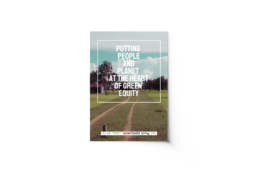With the world facing a climate crisis, urgent action is required on many fronts, not least in ensuring adequate levels of climate finance to support mitigation and adaptation in the Global South. Campaigns to shift public finance, provided through instruments such as development banks, out of fossil fuels and towards greener and cleaner investments have sparked a debate about how best public finance can support this needed transition. What matters is not only the quantity but also the quality of climate finance. This paper will examine one particular type of finance, which is rapidly gaining popularity among publicly-backed financial
institutions: ‘green equity’.
Put simply, ‘green equity’ means using equity investments – or shares in a client–to promote environmental sustainability, and as used in this paper, to ensure climate-compatibility of projects and programmes, especially with the mandates under the Paris Agreement. An example of ‘green equity’ is investments by public development banks or dedicated climate funds into private equity funds that support renewable energy projects, for instance, or investments by climate finance providers as anchor investors in specific mitigation or adaptation actions in order to provide a signal to leverage additional financial inputs.
Another approach is ‘greening equity’–a new strategy adopted by the International Finance Corporation, the private sector arm of the World Bank, where IFC uses its equity stake in commercial bank clients and
other financial institutions to require that they reduce and eliminate coal exposure (although not their exposure to oil and gas or other drivers of climate change, such as deforestation).


